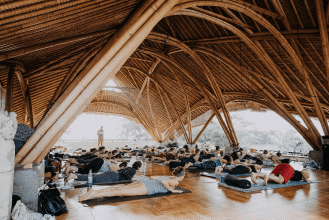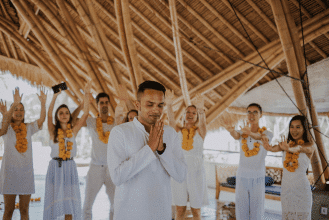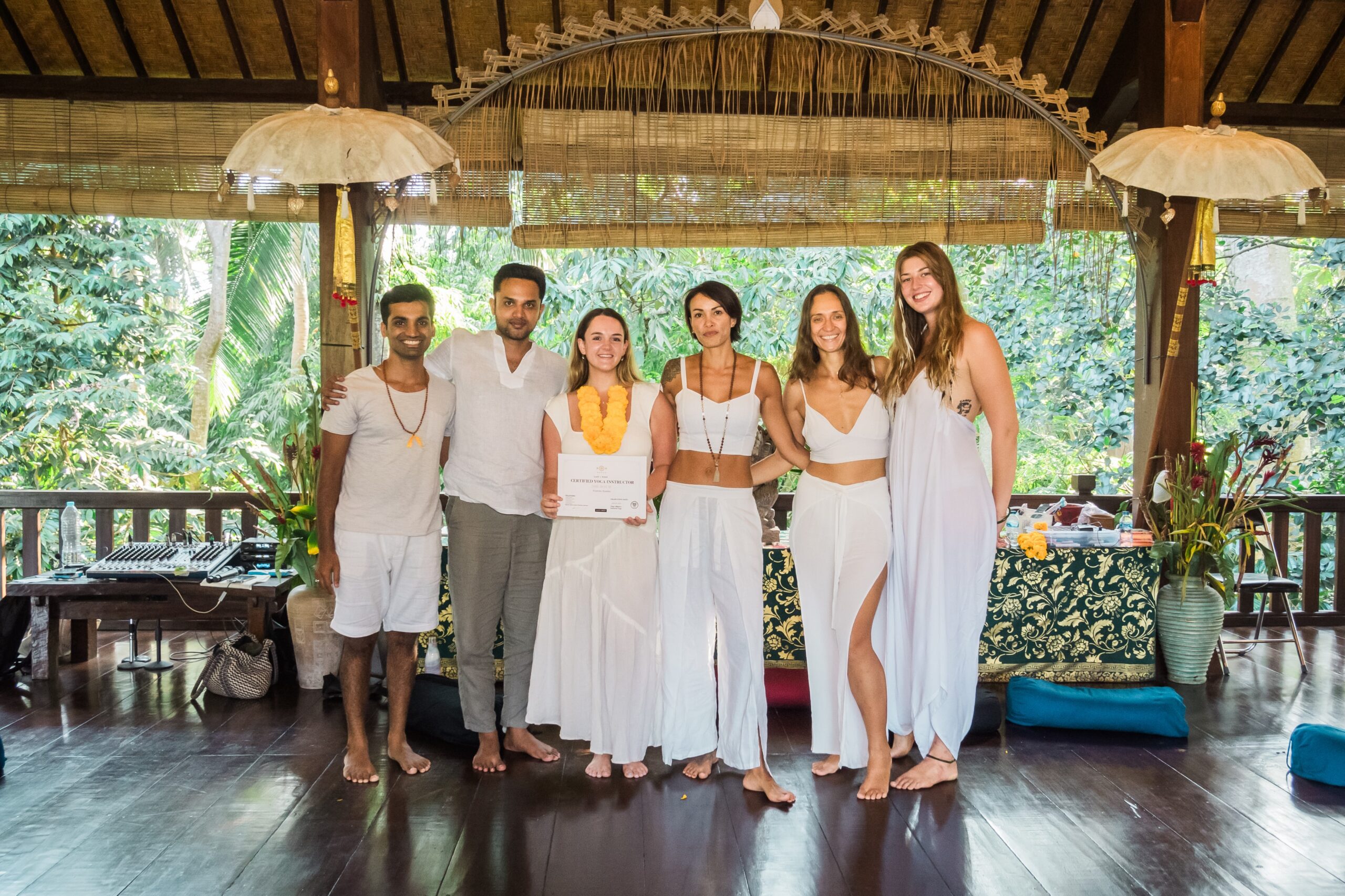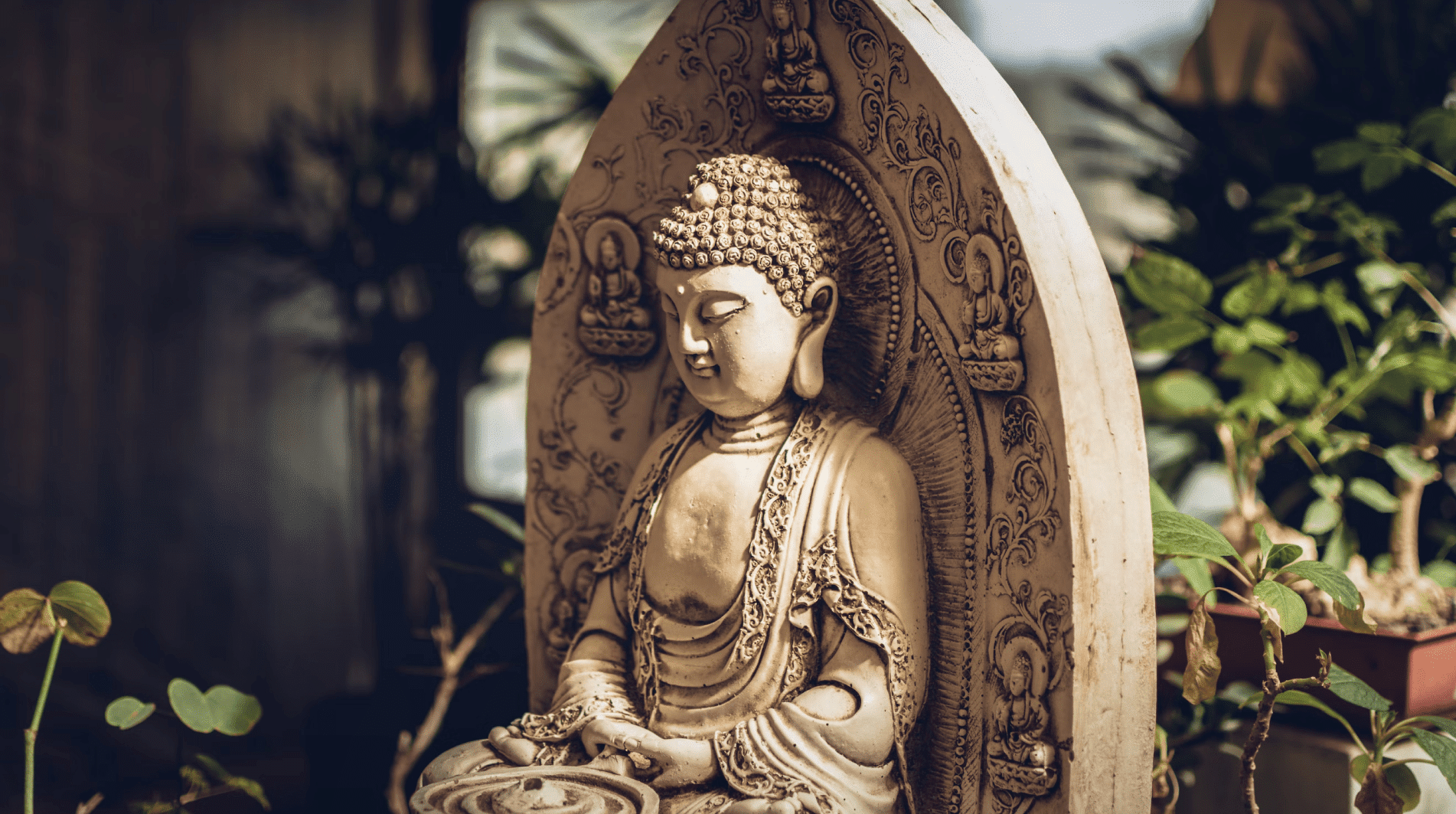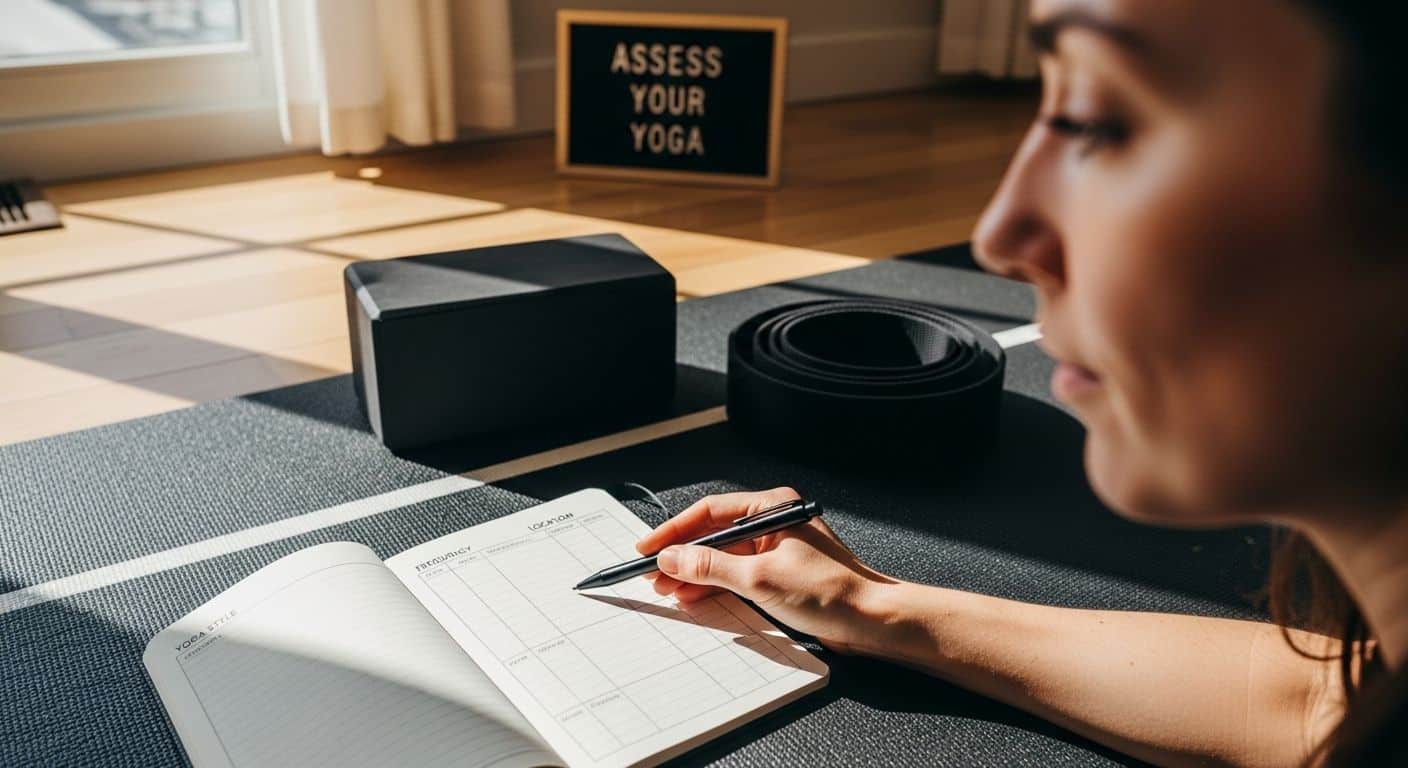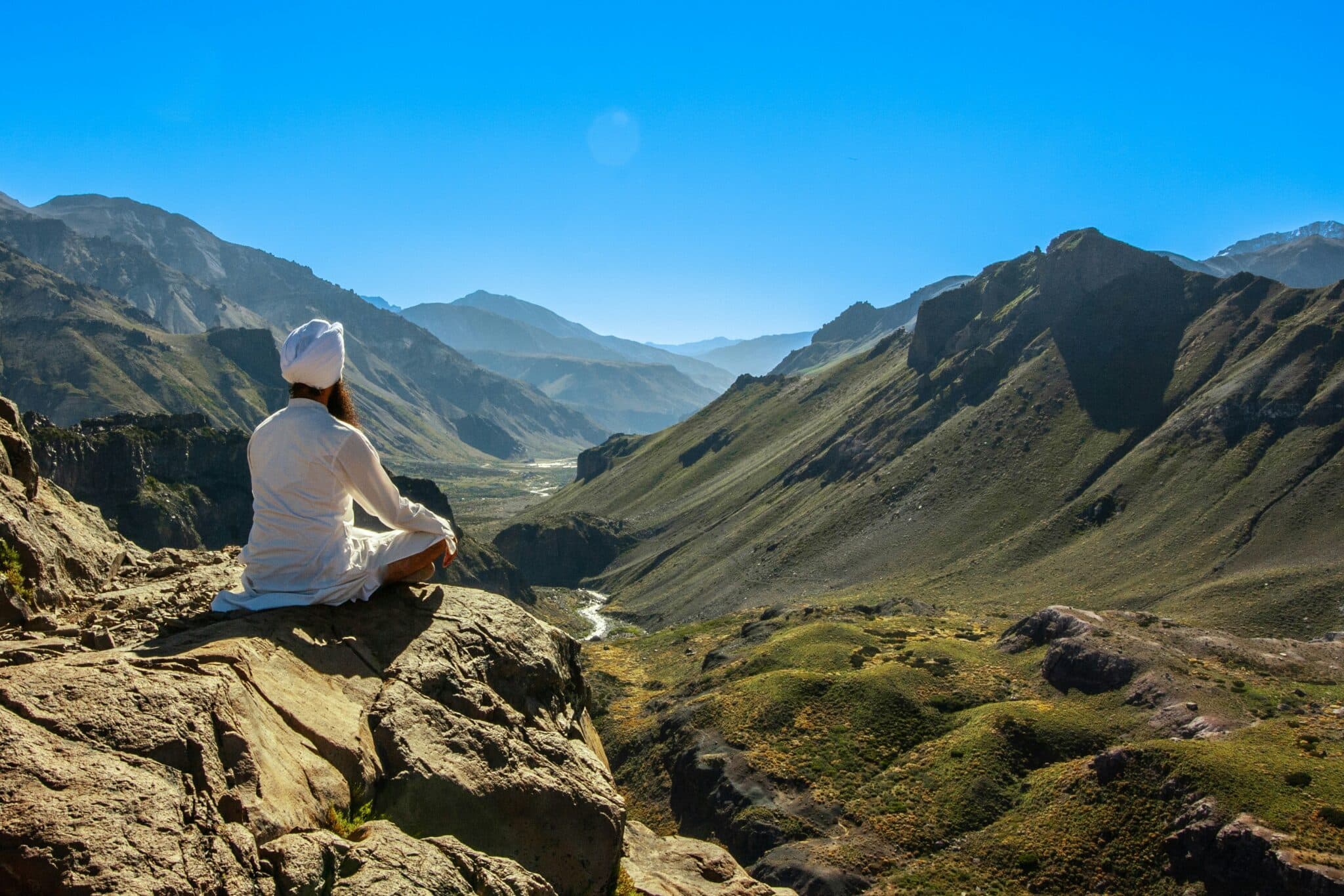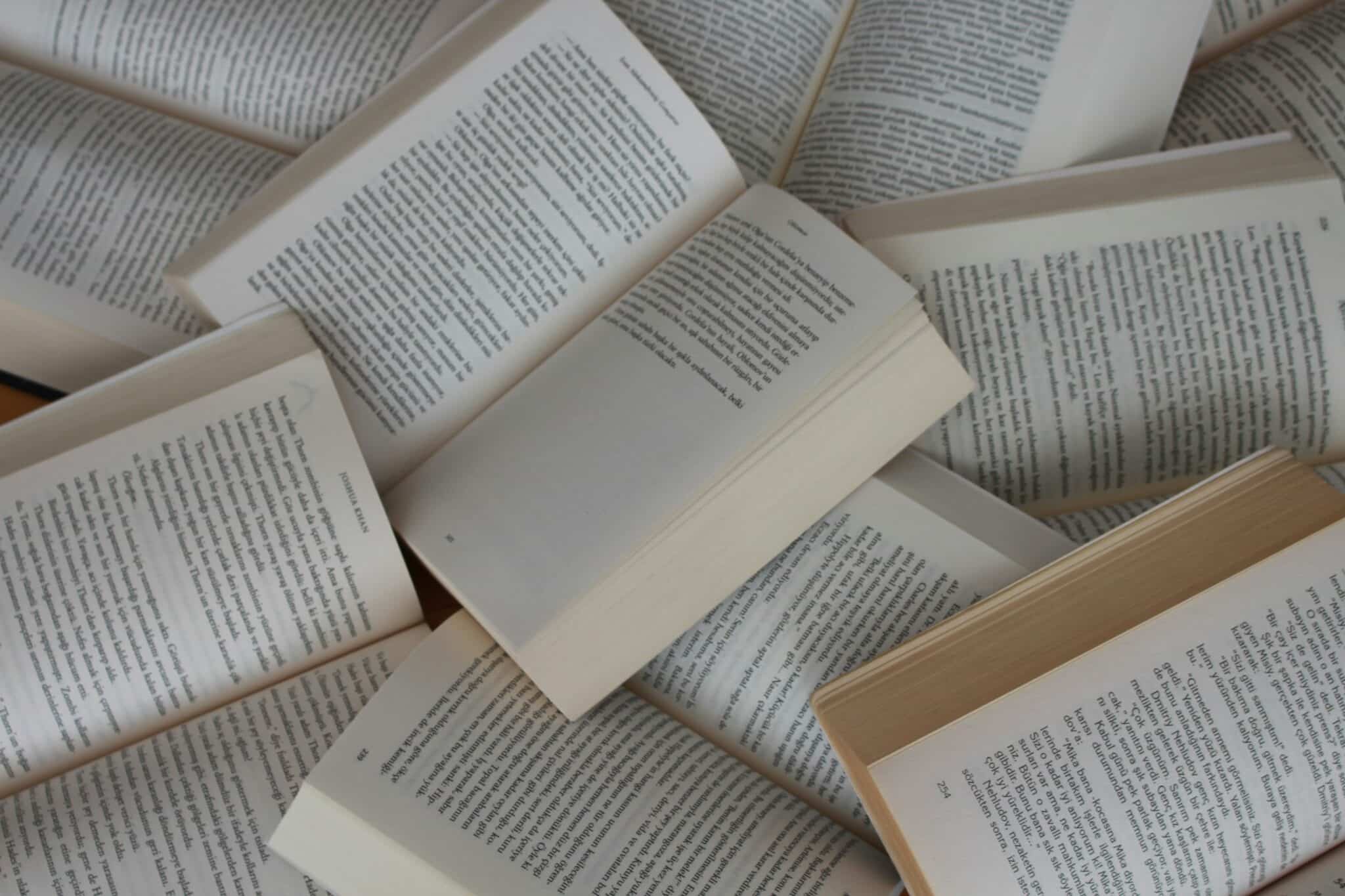
Yoga is a vast, living tradition. Many know it only as a physical practice, but yoga is also philosophy, meditation, and lifestyle. The deeper we go, the more it reveals. For students considering teacher training, or simply wanting to enrich their personal practice, self-study—or svadhyaya—is essential.
Books have always been one of yoga’s greatest teachers. They preserve ancient wisdom and also offer modern insights into living well. Below are 15 books that shaped my own journey as a student and teacher. Some are classics, others are modern interpretations. All of them expand the practice beyond the mat.
This list is not about rushing through every title. Think of it as a lifetime library. Some texts, like Light on Yoga or The Bhagavad Gita, may stay on your shelf for decades, revisited again and again. Others, like The Four Agreements, can be absorbed in an afternoon and applied immediately.
Yoga is about practice, not just reading. Let these books spark reflection, journaling, and conversations with your teachers and peers. Integrating what you learn into daily life is where the wisdom takes root.
If you want to dive deeper into this kind of embodied wisdom, East+West’s yoga teacher training in Bali and Costa Rica is a powerful next step.
Essential yoga books for new teachers
1. Yamas and the Niyamas by Deborah Adele
This book is often the first philosophy text recommended to yoga students. The yamas and niyamas are yoga’s ethical foundations. Adele’s approach is simple, structured, and accessible. Each chapter includes reflections and practical exercises, making these timeless teachings easy to integrate into daily life.
2. Meditation for the Love of It by Sally Kempton
Sally Kempton was a beloved meditation teacher, known for her warmth and clarity. In this book, she invites readers into meditation as a love affair rather than a discipline. She weaves practice instructions with spiritual stories, offering both inspiration and technique. It’s a gentle guide for anyone deepening their inner practice.
3. Four Chapters on Freedom by Swami Satyananda Saraswati
This text is based on the Yoga Sutras of Patanjali. Saraswati provides commentary that balances accessibility with depth. It covers meditation, concentration, and liberation, making it valuable for students exploring classical yoga philosophy. The writing is straightforward, but the concepts invite lifelong contemplation.
4. Yoga Beyond Belief by Ganga White
Ganga White challenges dogma and encourages inquiry. He invites readers to question rigid ideas about yoga while celebrating its diversity. This book offers a modern lens on practice and teaching, blending philosophy with personal reflection. It’s especially useful for teachers who want to develop their own authentic voice.
4. Light on Yoga by B.K.S. Iyengar
A cornerstone of modern yoga, this book is both encyclopedia and manual. Iyengar details more than 200 postures with photographs and instructions. He also explains pranayama and the philosophy behind practice. While dense, it remains an essential resource for teachers seeking precision, alignment, and historical context.
5. Think Like a Monk by Jay Shetty
This isn’t a traditional yoga text, but it translates yogic and monastic wisdom for modern life. Jay Shetty draws on his time as a monk to explore purpose, discipline, and resilience. His approachable writing makes ancient ideas accessible to a wide audience. For teachers, it’s a reminder of yoga’s relevance beyond the mat.

6. Bhagavad Gita translated by Eknath Easwaran
The Bhagavad Gita is one of yoga’s central texts. Easwaran’s translation is precise, poetic, and widely respected. The story unfolds as a dialogue on the battlefield, but it’s really about inner struggle, duty, and devotion. For teachers, it offers timeless lessons on purpose and selfless action.
7. Functional Anatomy for Yoga by David Keil
Keil bridges anatomy with practical application on the mat. This book is designed for yoga teachers who want to understand the body in motion. It covers biomechanics, alignment, and injury prevention. Unlike medical anatomy texts, Keil’s work stays grounded in the yoga classroom, making it directly useful.
8. The Yoga Tradition by Georg Feuerstein
Feuerstein was a renowned scholar of yoga. This book is encyclopedic, tracing yoga from its ancient roots through its many schools and traditions. While more academic in tone, it provides context that every serious teacher benefits from. It reminds us that yoga is far more than one style or method.
9. When Things Fall Apart by Pema Chödrön
Though rooted in Tibetan Buddhism, Chödrön’s teachings resonate deeply with yoga practitioners. This book explores impermanence, fear, and compassion with honesty and grace. Her writing is simple but profound. For teachers, it offers language for guiding students through difficulty both on and off the mat.
10. Be Here Now by Ram Dass
A counterculture classic, this book blends memoir, philosophy, and spiritual guidance. Ram Dass captures the essence of presence and the journey of awakening. Its playful format makes it unlike any other text on this list. While unconventional, it continues to inspire generations of seekers and teachers.
11. The Autobiography Of A Yogi By Paramahansa Yogananda
This memoir is one of the most influential yoga books of the 20th century. Yogananda shares his spiritual journey, weaving in stories of saints, miracles, and devotion. It’s inspiring, mystical, and deeply human. Many Western practitioners first encountered yoga philosophy through this text. For teachers, it offers both history and heart.
12. The Four Agreements by Don Miguel Ruiz
This slim book distills Toltec wisdom into four simple principles: be impeccable with your word, don’t take things personally, don’t make assumptions, and always do your best. While not a yoga text, it aligns beautifully with yogic ethics. Teachers often find its clarity helpful for their own lives and classrooms.
13. The Body Keeps Score by Bessel van der Kolk
Trauma-sensitive yoga and somatic practices are increasingly important in modern teaching. Van der Kolk’s book explains how trauma lives in the body and how healing happens. While clinical in parts, it’s eye-opening for teachers who want to create safe, inclusive spaces. It bridges science with the compassionate awareness yoga fosters.
14. Anatomy of the Spirit by Caroline Myss
This book explores the link between spirituality and health. Myss weaves together the chakras, Christian sacraments, and the Kabbalistic Tree of Life. While more metaphysical than anatomical, it offers a holistic view of healing. Teachers interested in subtle body theory will find it a fascinating complement to physical practice.
15. The Heart of Yoga by T.K.V. Desikachar
Desikachar, son of Krishnamacharya, brings yoga back to its personal essence. He emphasizes adapting practice to the individual rather than forcing uniformity. The book covers philosophy, postures, breath, and meditation in a way that feels both traditional and flexible. It’s an invaluable text for teachers wanting to meet students where they are.
If you’re considering teacher training, diving into these texts is a powerful way to prepare. They’ll give you context, vocabulary, and inspiration that enrich both your practice and your future teaching. And if you’re already a teacher, they’ll keep your perspective fresh, grounded, and evolving.
Yoga is bigger than any single tradition, book, or style. But each of these authors illuminates a different facet of its vast wisdom. By exploring them, you participate in the timeless practice of svadhyaya—turning inward, reflecting deeply, and discovering what yoga means in your own life.
